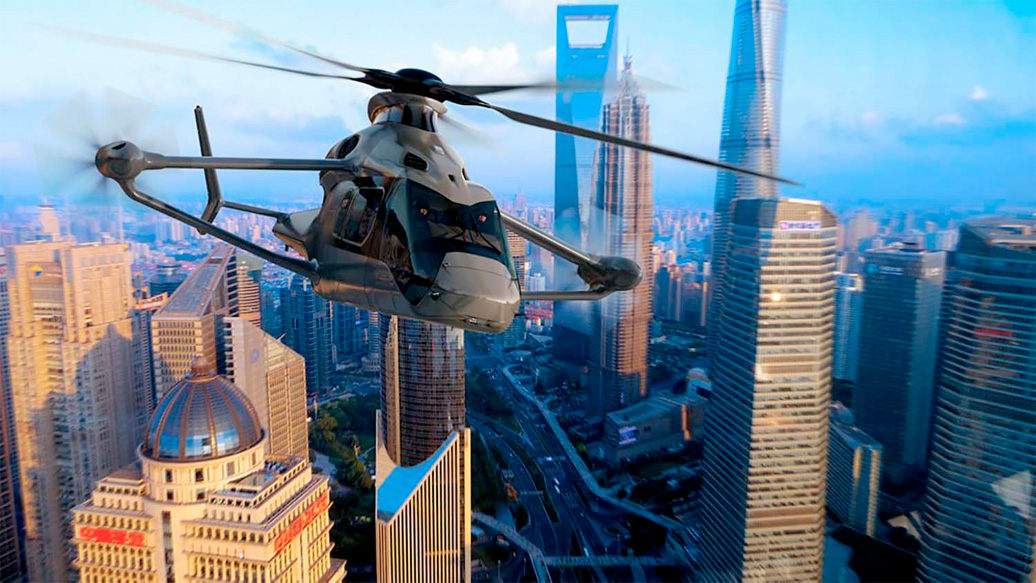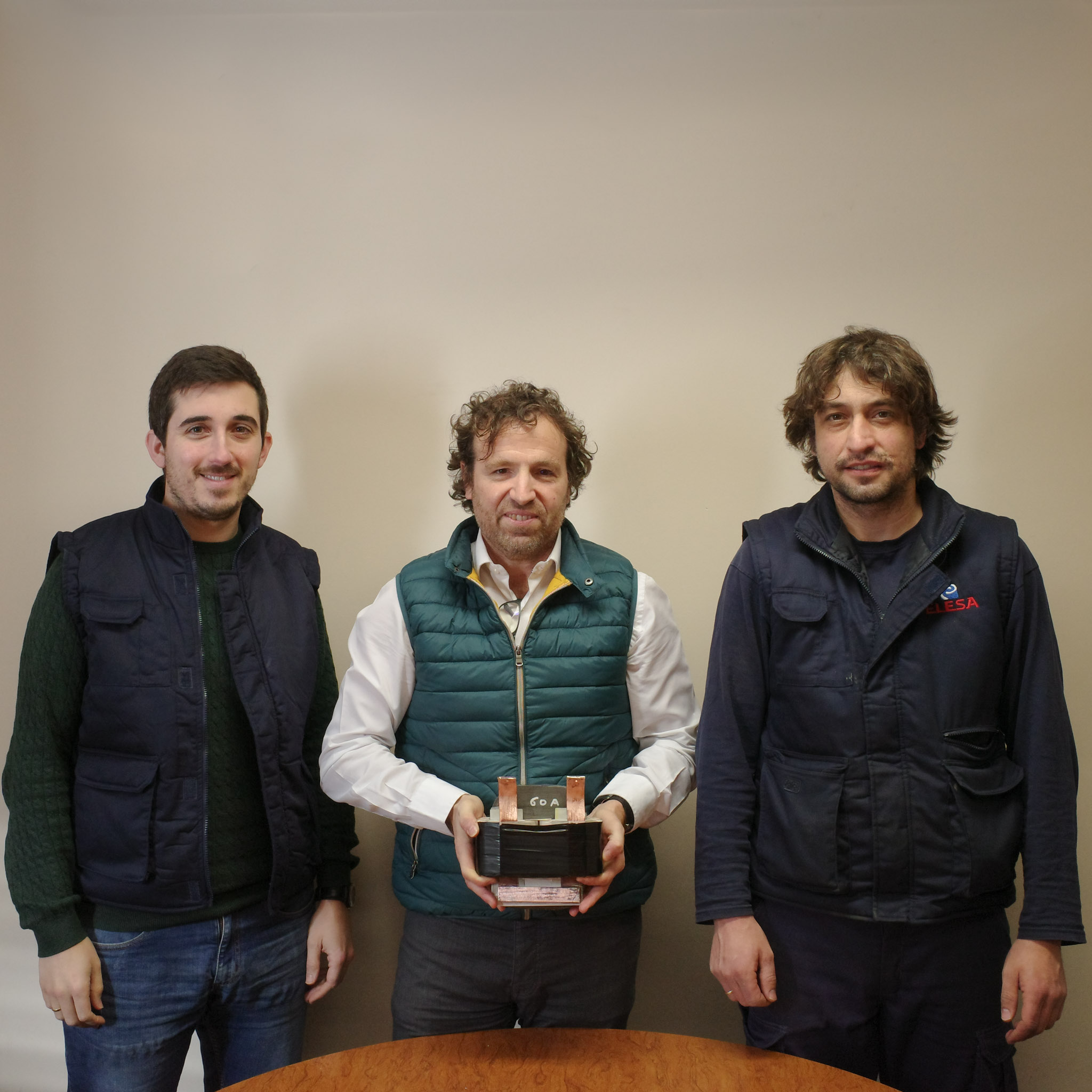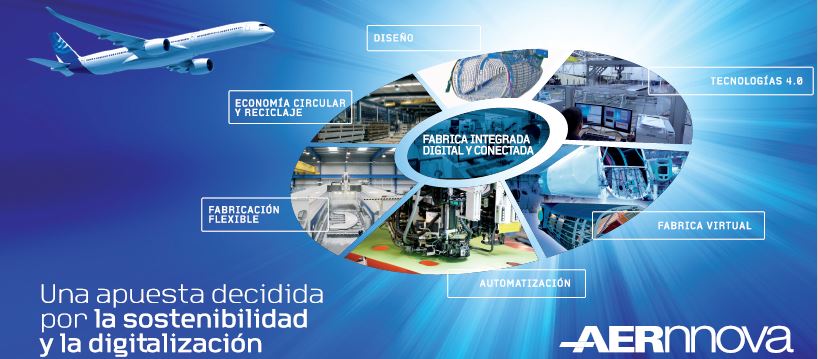ANNnews –Pablo Infante (Director Elesa Transformadores), Phill Scott (Hamble) – Innovation
17 December 2021
Over the past decade, the aerospace industry has undergone a major transformation. It has seen countless innovations reach succesful conclusiones and laid the foundation for future developments that are already on the horizon.
In order to contribute to the goal of zero net carbon emissions by 2050 and to play a leading role towards a net-zero emissions aviation industry, we must keep in mind that technological development and innovation is one of the strategic growth vectors to meet this ambitious goal.
Miguel Angel Castillo, Director of Technological Development of Arennova Group, considers that Aernnova has been betting on technology-based innovation to strengthen relationships with our customers and value chain. This responds to a commitment not only with our customers and shareholders, but also with all those who work at Aernnova and society as a whole. We are in the midst of an effort to overcome the effects of the pandemic. In addition, there are social demands for activities in the aerospace industrial sector to generate the least environmental impact. This, together with the increasingly rapid obsolescence of the technologies with which we generate value for our customers, makes technological innovation a top-level management and operational necessity.
“As a new challenge, innovation”
We would like to present two of the innovation projects in which Grupo Aernnova is currently involved.
ASTRAL PROJECT

As part of the Cleansky 2 program for Airbus Helicopters’ RACER fast helicopter demonstrator, Aernnova Engineering and Composites have recently developed and delivered the rear fuselage and empennages for the OUTCOME project. Perhaps less well known throughout the group is that Hamble Aerostructures Limited (HAL) as part of the ASTRAL project is completing the development and manufacture of the wings of this innovative helicopter to also be integrated into the flight prototype. HAL has been working in conjunction with the Aerospace Manufacturing Centre at the University of Nottingham in England.
The main objective of ASTRAL is to produce a stronger, stiffer and fully optimized prototype wing structure by maximizing the use of high-performance composite and environmentally friendly materials. ASTRAL integrates components for reduced assembly and enables a large reduction in weight and strength.
Later this year, the important milestone of delivering the wings for the flight prototype to Airbus Helicopters will be completed, and is the culmination of a five-year development phase in advanced manufacturing technologies and high-value design in line with the new technology-driven growth framework at HAL. During this year 2022, HAL’s participation in ASTRAL will be finalized.
In addition, this project has meant that HAL has implemented a digital twin of end-to-end model-based engineering throughout the design, analysis, simulation, manufacturing, assembly and inspection phases. This Industry 4.0 approach has facilitated a series of incremental improvements in product design and manufacturing, including improved buy to fly ratio, reduction in parts and overall weight, and sustainability of the overall production process. In turn, this has led to significant reductions in the time and cost of new product development.
ELESA: e-Mobility APPLICATIONS

The trend in the mobility sector seems clear in its commitment to vehicles based on electric motors, the use of which allows a priori more efficient energy consumption and zero emissions.
While the growing incorporation of electronic components in combustion vehicles (sensors, actuators, on-board computers) has already led to an increase in the demand for inductive components, the advent of the electric car has been a milestone in this respect.
On-board power supplies, both traction and auxiliary, require a large number of inductive components. Each application has its own requirements, but all are very much in line with the properties of the amorphous and nanocrystalline cores manufactured at ELESA (https://www.elesa-trafocore.com/productos/nucleos/).
The advent of the electric car has also brought the need for ultra-fast charging stations. There is a big race in the industry for more powerful, faster, more flexible and smaller chargers, and this trend involves the use of medium frequency transformers (MFTs) to meet these weight, size and efficiency requirements. Due to their combination of low loss and high saturation inductance, nanocrystalline cores are ideal for this application (https://www.elesa-trafocore.com/productos/nucleos-nanocristalinos/).
The use of such mid-frequency switching topologies requires the insertion of a filtering and power factor correction stage at the input of the charger, which requires inductance for high current levels. Due to their magnetic properties and competitive price, multi-cut amorphous cores (https://www.elesa-trafocore.com/productos/nucleos-fichas/amorfos/cortados/) are ideal for this application, as they allow an optimal adjustment of the inductance value.
“The products manufactured by ELESA are proving to be a key component for electromobility systems.”
In addition to these two main inductive components, the chargers can also house current measuring transformers, differential protections and common mode chokes to avoid electromagnetic interference, and the requirements for all of these are perfectly matched to the properties of the nanocrystalline cores.
Elesa is currently in full series production of cores for input inductance, as well as nanocrystalline cores for other applications mentioned above. Thanks to close cooperation with customers and its know-how in high-frequency transformers, it is developing prototypes for the main transformer of the charger together with the customer.





